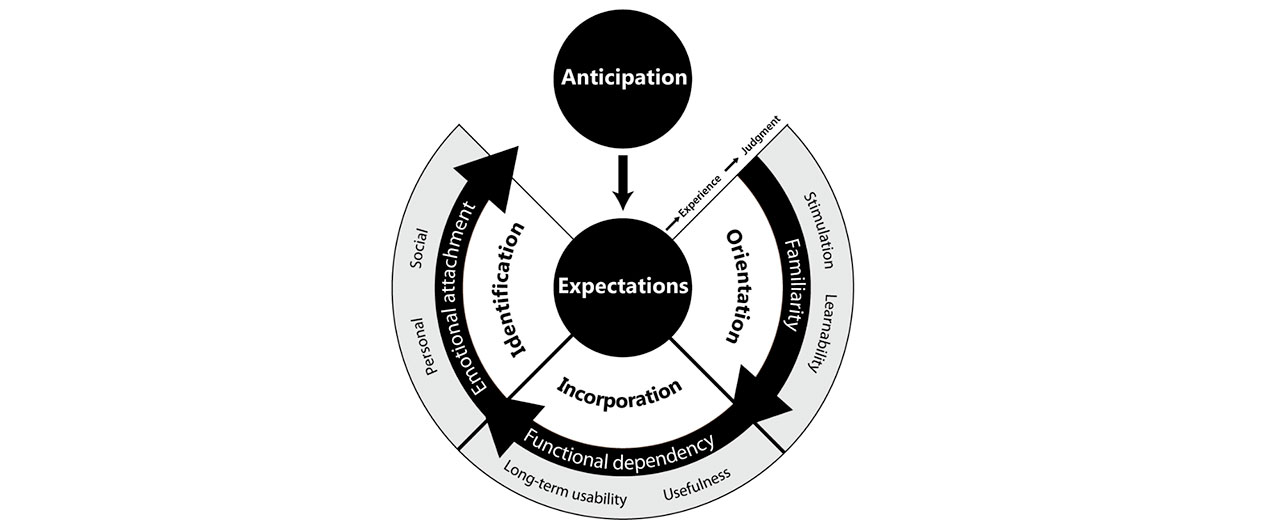For long, HCI had neglected longitudinal studies. As a result, our understanding of the qualities of interactive technologies was limited to users’ initial interactions. Learnability was emphasized over systems’ long-term usability. Aesthetics and novel interaction styles over the true value technologies brought to people in daily life.
With the emergence of the User Experience subfield, we set out to understand how much could early interactions differ from users’ prolonged engagement with technology.
In the first, exploratory study (Karapanos et al., 2008), we tested a popular structural model of UX (Hassenzahl’s pragmatic/hedonic framework) at two moments in users’ adoption of a technology: during the first week of use, and four weeks after.
In our second study (Karapanos et al., 2009) we conducted an in-depth, five-week ethnographic study where we followed 6 individuals during an actual purchase of the Apple iPhone, and found prolonged use to be motivated by different qualities than the ones that provided positive initial experiences. We crystallized these findings in the form of a framework that identifies three phases in the adoption of interactive technology – orientation, incorporation, and identification – and three forces of temporality – increasing familiarity, functional dependency, and emotional attachment.
| Karapanos, E., Hassenzahl, M., and Martens, J.B. (2008) User experience over time. In CHI ’08 Extended Abstracts on Human Factors in Computing Systems (CHI EA ’08). ACM, New York, NY, USA, 3561-3566. |
